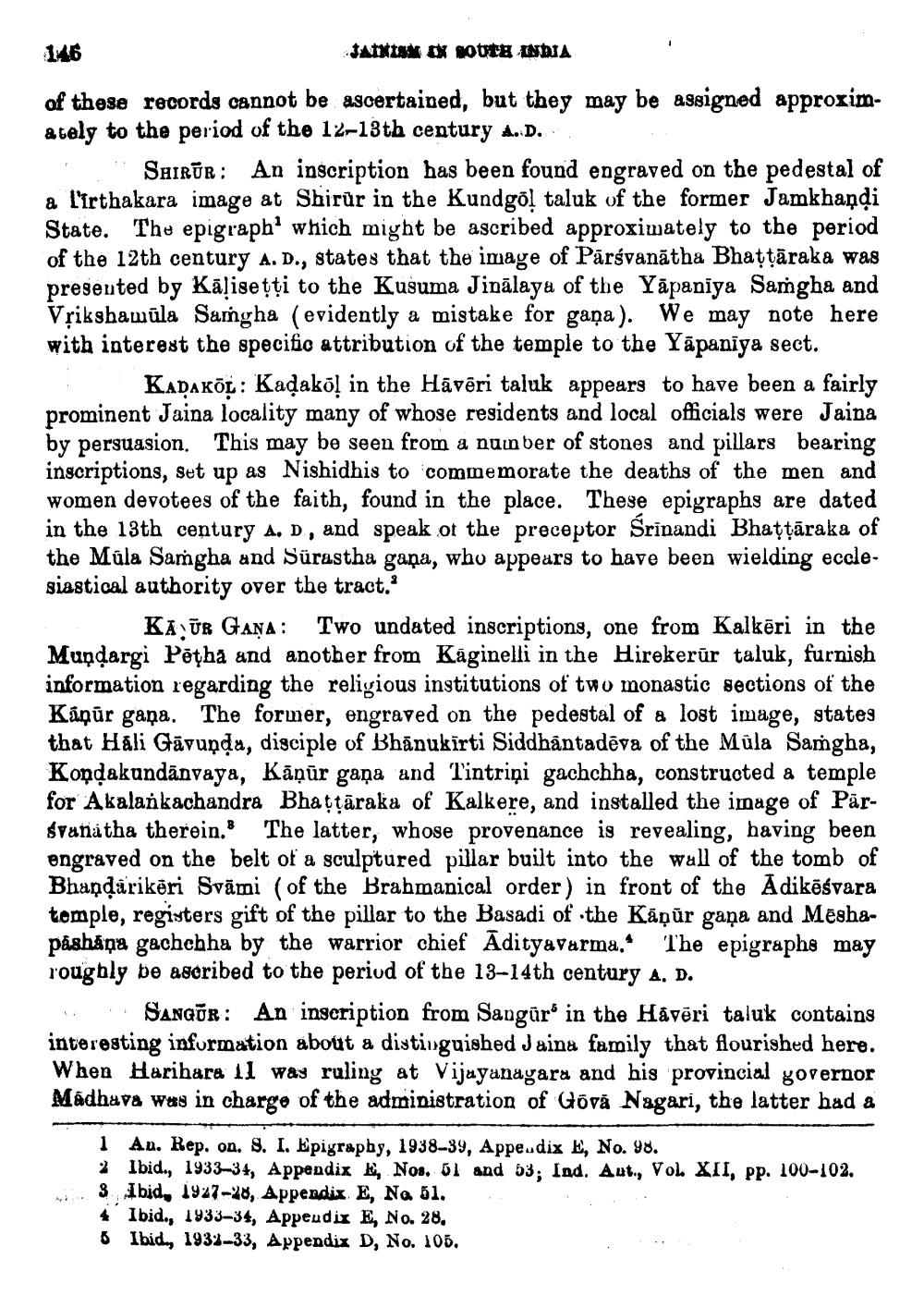________________
146
JAINISM EN SOUTH INDIA
of these records cannot be ascertained, but they may be assigned approximately to the period of the 12-13th century A.D.
SHIRUR: An inscription has been found engraved on the pedestal of a l'irthakara image at Shirur in the Kundgōl taluk of the former Jamkhaṇḍi State. The epigraph' which might be ascribed approximately to the period of the 12th century A. D., states that the image of Pärsvanatha Bhaṭṭāraka was presented by Kaliseṭṭi to the Kusuma Jinalaya of the Yapaniya Samgha and Vrikshamula Samgha (evidently a mistake for gana). We may note here with interest the specific attribution of the temple to the Yapaniya sect.
KADAKOL: Kadakōl in the Hāvēri taluk appears to have been a fairly prominent Jaina locality many of whose residents and local officials were Jaina by persuasion. This may be seen from a number of stones and pillars bearing inscriptions, set up as Nishidhis to commemorate the deaths of the men and women devotees of the faith, found in the place. These epigraphs are dated in the 13th century A. D, and speak of the preceptor Śrīnandi Bhaṭṭāraka of the Mula Samgha and Sürastha gana, who appears to have been wielding ecclesiastical authority over the tract.'
KA UR GANA: Two undated inscriptions, one from Kalkeri in the Mundargi Petha and another from Kaginelli in the Hirekerür taluk, furnish information regarding the religious institutions of two monastic sections of the Kāņür gaņa. The former, engraved on the pedestal of a lost image, states that Hali Gavunda, disciple of Bhānukirti Siddhantadeva of the Müla Samgha, Kondakundanvaya, Kāṇur gana and Tintriņi gachchha, constructed a temple for Akalankachandra Bhaṭṭāraka of Kalkere, and installed the image of ParSvanatha therein." The latter, whose provenance is revealing, having been engraved on the belt of a sculptured pillar built into the wall of the tomb of Bhandarikēri Svami (of the Brahmanical order) in front of the Adikēśvara temple, registers gift of the pillar to the Basadi of the Kāņur gana and Meshapashāņa gachchha by the warrior chief Adityavarma. The epigraphs may roughly be ascribed to the period of the 13-14th century A. D.
SANGUR: An inscription from Sangür' in the Hāvēri taluk contains interesting information about a distinguished Jaina family that flourished here. When Harihara il was ruling at Vijayanagara and his provincial governor Madhava was in charge of the administration of Gōva Nagari, the latter had a
1 An. Rep. on. S. I. Epigraphy, 1938-39, Appendix E, No. 98.
2 Ibid., 1933-34, Appendix E, Nos. 51 and 53; Ind. Aut., Vol. XII, pp. 100-102. 3 Ibid, 1927-28, Appendix E, No. 51.
4 Ibid., 1933-34, Appendix E, No. 28.
5 Ibid., 1932-33, Appendix D, No. 105.




